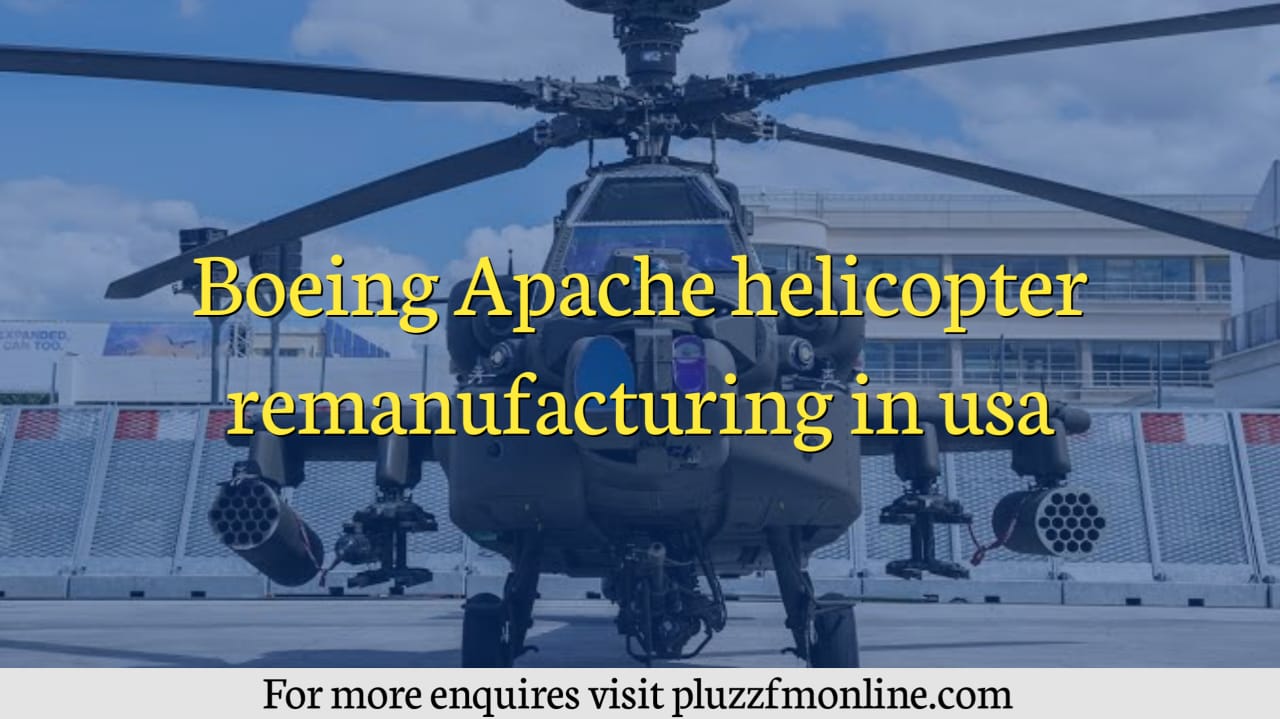Boeing Apache Helicopter Remanufacturing Process
The Boeing Apache Helicopter Remanufacturing Process stands as a pinnacle of military aviation, renowned for its agility, firepower, and versatility. However, like all machinery, Apaches require periodic refurbishment to maintain their peak performance. In this article, we delve into the intricate process of remanufacturing Boeing Apache helicopters, exploring the steps involved, the significance of the process, and its impact on both the military and the aerospace industry.
Understanding the Boeing Apache Helicopter
The Boeing Apache helicopter has a rich history dating back to its introduction in the 1980s. Initially designed for advanced attack and reconnaissance missions, it has since undergone several upgrades to adapt to evolving battlefield requirements. Equipped with cutting-edge avionics, powerful engines, and lethal weaponry, the Apache remains a formidable force on the battlefield.
Need for Remanufacturing
Over time, the rigorous demands of combat operations take their toll on Apache helicopters, leading to wear and tear of critical components. The remanufacturing process becomes essential to extend the lifespan of these aircraft while ensuring continued operational readiness. Compared to manufacturing new helicopters, remanufacturing offers cost savings and reduces the strain on resources.
Initial Assessment
Remanufacturing begins with a comprehensive assessment of existing Apache helicopters. Trained technicians meticulously inspect each aircraft, identifying components that require repair or replacement. This initial evaluation sets the stage for the subsequent phases of the remanufacturing process.
Disassembly
Disassembly is a meticulous process that involves carefully dismantling the helicopter, separating each component for further inspection and refurbishment. Skilled technicians follow precise procedures to ensure the integrity of critical parts while maintaining safety standards throughout the process.
Each component undergoes thorough evaluation to determine its condition and suitability for reuse. Components that can be repaired undergo meticulous refurbishment, while those beyond repair are replaced with new or refurbished parts. This step ensures that only components meeting the highest standards are used in the remanufacturing process.
Repair and Replacement
Repairing damaged components is a crucial aspect of the remanufacturing process. Skilled engineers employ advanced techniques to restore components to their original specifications, ensuring optimal performance and reliability. Additionally, replacement parts are sourced from trusted suppliers to maintain the quality and integrity of the helicopter.
Modernization Upgrades
In addition to refurbishment, remanufacturing offers the opportunity to incorporate modernization upgrades. These upgrades enhance the capabilities of the Apache helicopter, incorporating advanced technologies such as digital avionics, enhanced sensors, and improved weaponry. By integrating these upgrades, remanufactured Apaches gain a competitive edge on the battlefield.
Assembly Process
Once all components have been refurbished or replaced, the helicopter undergoes reassembly under stringent quality control measures. Skilled technicians meticulously piece together the aircraft, ensuring that each component is properly aligned and integrated. Attention to detail is paramount to ensure the safety and performance of the remanufactured Apache.
Testing and Calibration
After assembly, the remanufactured Apache undergoes rigorous testing to validate its performance and functionality. Various systems and subsystems are tested under simulated operating conditions to identify any issues or anomalies. Calibration ensures that all systems operate within specified parameters, guaranteeing optimal performance in real-world scenarios.
Quality Assurance
Quality assurance is a cornerstone of the remanufacturing process, with multiple checkpoints established to verify compliance with safety and quality standards. Final inspections are conducted to ensure that all components meet stringent criteria before the helicopter is cleared for operation. By adhering to strict quality assurance protocols, remanufacturers uphold the highest standards of excellence.
Documentation and Certification
Throughout the remanufacturing process, meticulous documentation is maintained to track the status of each component and procedure. Upon completion, the remanufactured Apache undergoes certification to validate its airworthiness and compliance with regulatory requirements. This documentation serves as a testament to the thoroughness and professionalism of the remanufacturing process.
Environmental Considerations
In an era of increasing environmental awareness, sustainable practices play a crucial role in helicopter remanufacturing. Remanufacturers prioritize recycling and waste management, minimizing the environmental impact of the process. By adopting eco-friendly practices, the aerospace industry demonstrates its commitment to environmental stewardship.
Cost and Time Considerations
Remanufacturing offers significant cost savings compared to manufacturing new helicopters, making it an attractive option for military organizations seeking to maximize their budgets. Additionally, remanufacturing reduces the lead time required to return helicopters to service, ensuring rapid turnaround times to meet operational demands.
Future Prospects
Looking ahead, the future of helicopter remanufacturing holds promise for continued innovation and advancement. Technological breakthroughs are expected to further enhance the capabilities of remanufactured helicopters, ensuring their relevance and effectiveness on the modern battlefield. However, challenges such as evolving threats and budget constraints will require ongoing adaptation and investment in research and development.
The remanufacturing process plays a vital role in ensuring the longevity and effectiveness of Boeing Apache helicopters. By refurbishing and modernizing existing aircraft, remanufacturers extend their operational lifespan while enhancing their capabilities to meet the demands of modern warfare. With a commitment to excellence and innovation, the aerospace industry continues to push the boundaries of helicopter remanufacturing, ensuring that Apache helicopters remain a formidable force on the battlefield for years to come.
FAQs:
1. What is the difference between remanufacturing and refurbishing a helicopter? Remanufacturing involves comprehensive disassembly, evaluation, repair, and modernization of a helicopter, whereas refurbishing typically focuses on cosmetic improvements and minor repairs.
2. How long does the remanufacturing process typically take? The duration of the remanufacturing process varies depending on the extent of refurbishment and modernization upgrades required.
3. Are remanufactured helicopters as reliable as new ones? Yes, remanufactured helicopters undergo rigorous testing and quality assurance measures to ensure their reliability and airworthiness.
4. Can any helicopter be remanufactured, or are there limitations? While most helicopters can undergo remanufacturing to some extent, the feasibility and cost-effectiveness depend on factors such as the condition of the aircraft and the availability of replacement parts.
5. How does remanufacturing contribute to sustainability? Remanufacturing reduces the demand for new materials and minimizes waste generation, making it a more environmentally sustainable option compared to manufacturing new helicopters.
follow pluzzfmonline for more updates!
Check out Amherst College Scholarships for International Students 2024.










